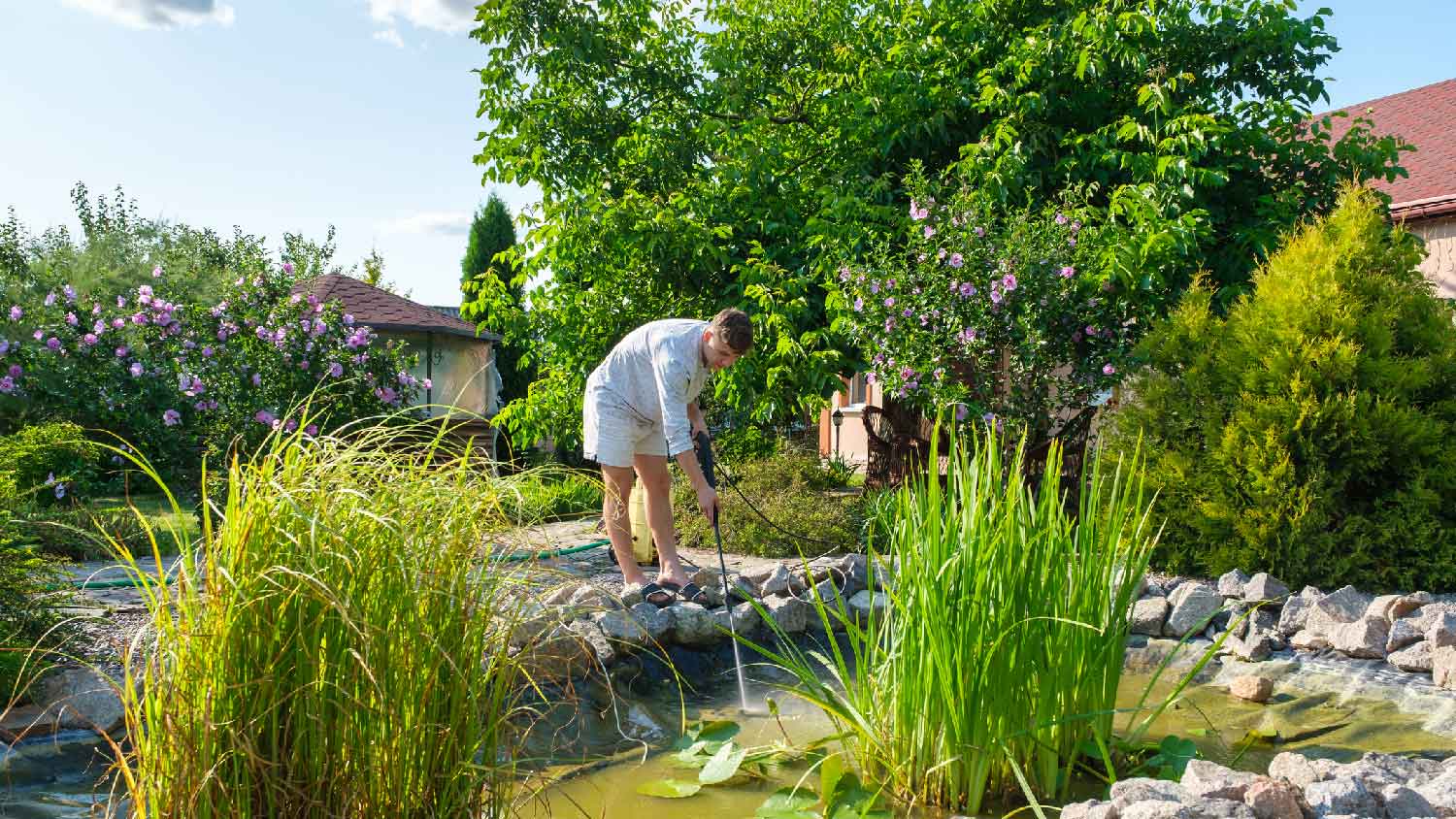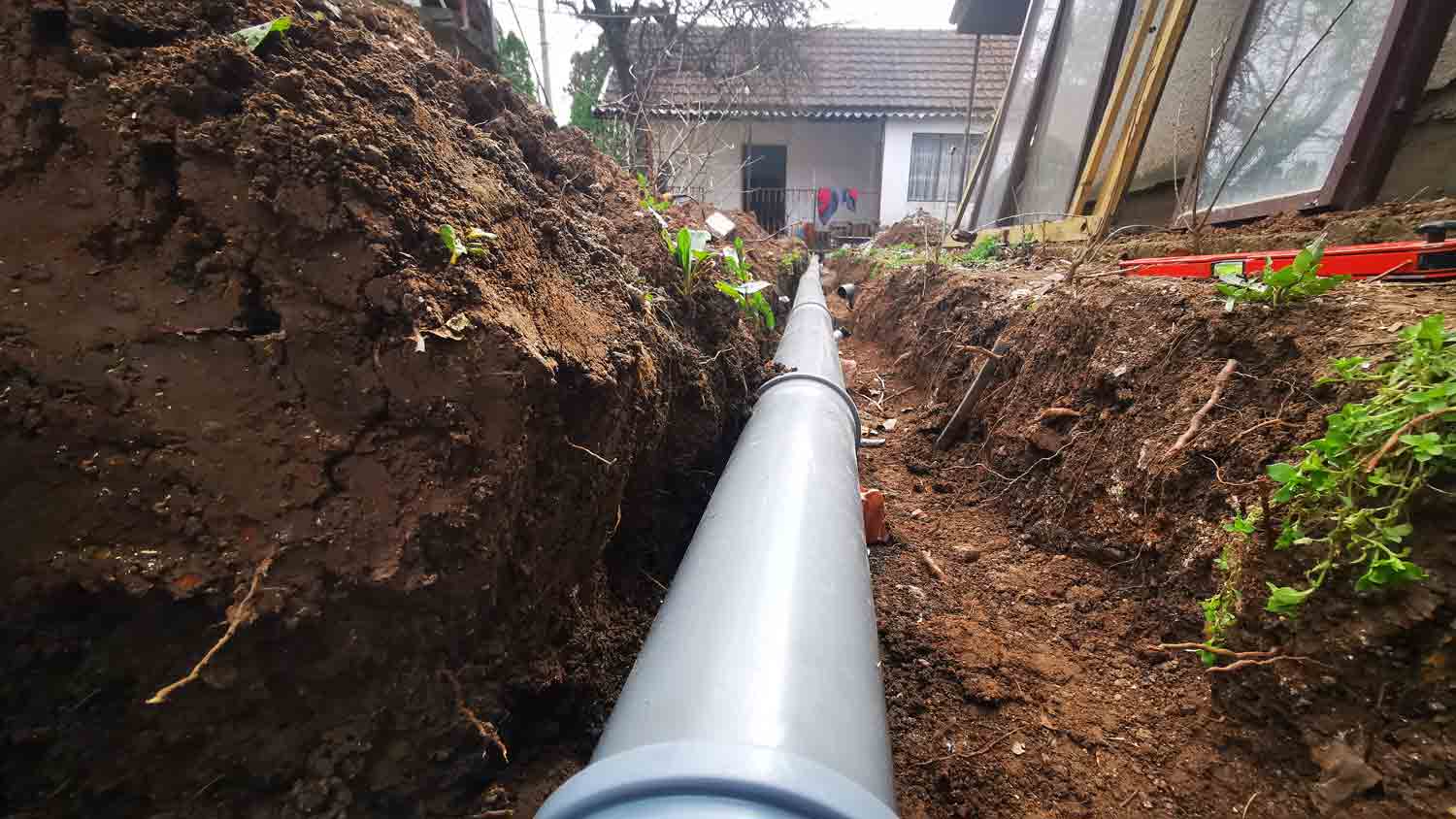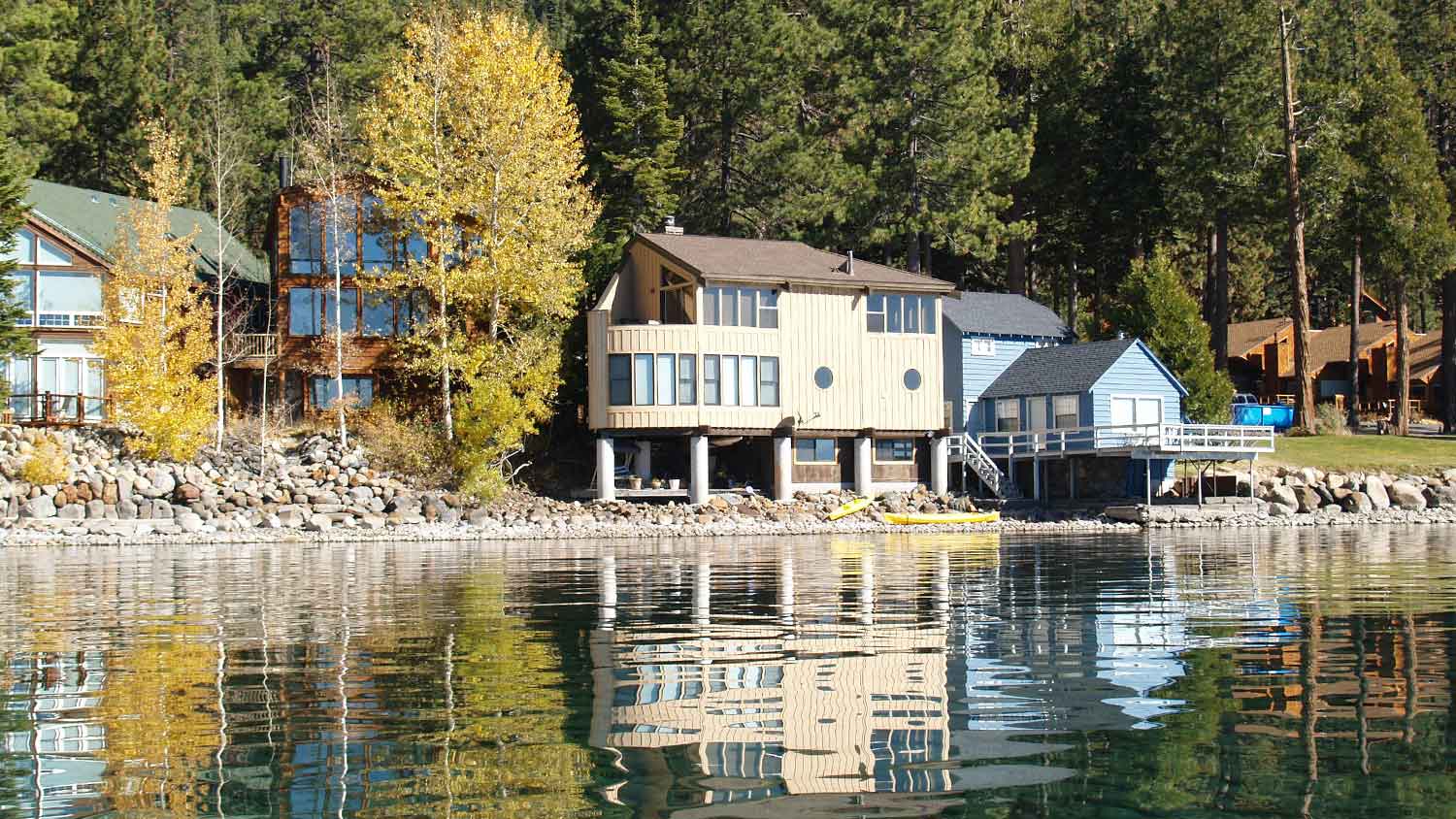
What are average sod installation prices? Learn how much sod costs based on factors like square footage, land prep, land condition, and more.
Our pond volume calculator makes math easy as 1-2-3


Knowing how much water your pond can hold allows you to properly maintain it.
You can calculate pond volume by multiplying the pond's area by its depth.
The exact formula you use depends on whether you're measuring in gallons or liters.
You may be looking out at your yard and asking yourself, "How big is my pond?" When calculating the size of your pond, you first need to measure its area, then find the volume to determine how much water it can hold. The water volume of the pond will determine the amount of treatment product to use and how many fish can call it home.
To find out how many gallons of water your pond needs, multiply its volume by 7.48, which is the number of gallons in a cubic foot. If you're using liters, multiply the volume by 1,000, the number of liters in a cubic meter.
| Pond Volume (Cubic Feet) | Water Needed (Gallons) | Pond Volume (Cubic Meters) | Water Needed (Liters) |
|---|---|---|---|
| 36 | 270 | 1 | 1,000 |
| 72 | 539 | 2 | 2,000 |
| 144 | 1,078 | 3 | 3,000 |
| 324 | 2,424 | 4 | 4,000 |
You need three measurements to calculate the volume of your pond: its length, width, and depth.
Pond Volume = Length x Width x Depth
For a pond that's rectangular or square in shape, you simply need to measure the length and width to find the square footage. From there, multiply the square footage by the pond's maximum depth to get the overall volume.
For circular or irregularly shaped ponds, you need to use a slightly different formula.
To measure a circular pond, you'll need to find out the area of a circle. The formula for that is πr squared, or 3.14 times the circle's radius squared.
Measure the pond's diameter, then divide that by two to get the radius. For example, if your pond has a diameter of 8 feet, the radius is 4 feet. The total area is 3.14 x (4 squared), or 50.24 feet.
Multiply that by the maximum depth to get the volume of the pond.
If your pond has an irregular shape, such as a kidney bean or oval shape, the best way to measure is by creating straight lines around the perimeter of the pond, then measuring the length and width of those lines.
Multiply the length and width to get an approximation of the pond's square footage. Then, multiply that by the maximum depth to get the volume of the pond.

Who should you hire to create a pond? Your best bet is to work with a local pond builder, who can help you determine the right size for your property, as well as the optimal shape for your needs.
If you're hoping to stock the pond with aquatic life, such as koi or other types of fish, a professional pond builder can also provide guidance on the best species to choose and how many fish to stock in the pond.
From average costs to expert advice, get all the answers you need to get your job done.

What are average sod installation prices? Learn how much sod costs based on factors like square footage, land prep, land condition, and more.

A landscape designer can elevate your outdoor space and bring your vision to life. Use this landscape design cost guide to budget for your next project.
.jpg?impolicy=leadImage)
Landscaping your yard adds curb appeal and expands your home’s living space into the outdoors. Learn how much landscaping costs for various projects.

The cost of topsoil varies based on the size of the area and the depth, as well as prep and labor. This article covers everything to factor into your budget.

Keep your yard from flooding by choosing the right piping and drainage. Learn what type of piping is used for the drainage system in a yard with this guide.

Riprap prevents erosion and protects your shoreline when done right. Learn who to hire for riprap and how to find a licensed professional.